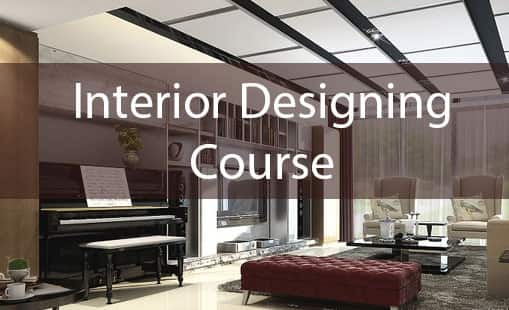Embarking on a journey to become an interior designer involves immersing yourself in a world of creativity, technical skills, and design theory. But what exactly will you study in an interior design course? This blog post breaks down the core subjects, modules, and practical experiences you can expect.
Semester-Wise Core Subjects in Interior Design Courses
| Semester | Core Subjects/Modules | Description |
| Semester 1 | Design Fundamentals | Introduction to design principles, elements of design (line, form, color, texture), basic drawing and sketching, visual communication. |
| History of Art and Design | Exploration of historical design movements, architectural styles, and their influence on interior design. | |
| Basic Drafting and CAD | Introduction to technical drawing, orthographic projections, and basic CAD software. | |
| Semester 2 | Space Planning and Design | Principles of space planning, ergonomics, furniture layout, and circulation. |
| Building Materials and Construction | Study of various building materials, construction techniques, and building codes. | |
| Color Theory and Application | Understanding color psychology, color schemes, and their application in interior spaces. | |
| Semester 3 | Furniture Design and Detailing | Design and construction of furniture, including detailing, joinery, and materials. |
| Lighting Design | Principles of lighting, lighting fixtures, and their application in creating different moods and atmospheres. | |
| Interior Design Studio I | Practical application of design principles through studio projects, focusing on residential spaces. | |
| Semester 4 | Interior Design Studio II | Advanced studio projects, focusing on commercial spaces like offices, retail stores, or restaurants. |
| Sustainable Design | Principles of sustainable design, green building practices, and eco-friendly materials. | |
| Professional Practice | Introduction to the business aspects of interior design, including client management, contracts, and project management. | |
| Semester 5 | Interior Design Studio III | Complex studio projects involving larger scale spaces or specialized design challenges. |
| Building Services | Study of HVAC systems, plumbing, electrical systems, and their integration into interior spaces. | |
| Computer-Aided Design (Advanced) | In-depth training on advanced CAD software, 3D modeling, and rendering. | |
| Semester 6 | Interior Design Studio IV / Thesis Project | Final semester project involving a comprehensive design solution for a real or hypothetical client. |
| Project Management | Advanced project management skills, including budgeting, scheduling, and team management. | |
| Portfolio Development | Creating a professional portfolio showcasing your best work. |
Design Principles in Interior Design Courses Syllabus:
A solid understanding of design principles is fundamental to any interior design course. These principles guide designers in creating visually appealing and functional spaces. Key principles include:
- Balance: Creating a sense of equilibrium in a space through the arrangement of elements.
- Harmony: Creating a sense of unity and coherence through the use of similar elements.
- Rhythm: Creating visual movement and interest through the repetition of elements.
- Emphasis: Creating a focal point in a space to draw attention.
- Proportion and Scale: Understanding the relationship between the size of objects and the space they occupy.
Electives in Interior Design Courses Syllabus:
Electives allow students to specialize in areas of particular interest. Some common electives include:
- Landscape Design: Designing outdoor spaces and integrating them with interior environments.
- Universal Design: Designing spaces that are accessible to people of all abilities.
- Historic Preservation: Studying and preserving historic buildings and interiors.
- Furniture Restoration: Learning techniques for restoring and repairing antique furniture.
- Set Design for Film and Television: Designing sets for film, television, and theater productions.
Practical Projects:
Practical projects are a crucial component of interior design education. They provide students with hands-on experience and allow them to apply their knowledge in real-world scenarios. Examples include:
- Residential Design Projects: Designing living rooms, bedrooms, kitchens, and bathrooms.
- Commercial Design Projects: Designing offices, retail spaces, restaurants, and hotels.
- Model Making: Creating physical models of interior spaces to visualize design concepts.
- Site Visits: Visiting construction sites and showrooms to learn about materials and construction techniques.
- Internships: Gaining practical experience by working in design firms or related businesses.
Assessments in Interior Design Courses Syllabus:
Assessment methods in interior design courses are varied and designed to evaluate different aspects of your learning. Common assessment types include:
- Studio Projects: These are the cornerstone of most interior design programs. You’ll be assessed on your design concepts, technical drawings, presentations, and model making.
- Written Exams: These assess your understanding of theoretical concepts, such as history of design, building materials, and building services.
- Presentations: You’ll be required to present your design projects to faculty and peers, demonstrating your communication and presentation skills.
- Portfolio Reviews: Your portfolio will be reviewed by faculty and sometimes industry professionals to evaluate your overall design skills and potential.
- Assignments and Homework: These reinforce classroom learning and provide opportunities to practice specific skills.
- Internship Evaluations: If your program includes an internship, your performance will be evaluated by your supervisor.
- Critiques: Regular critiques of your studio work by faculty and peers provide valuable feedback and help you improve your designs.
By understanding the subjects, principles, and practical experiences involved in an interior design course, you can make an informed decision about your educational path and prepare for a successful career in this exciting field. Remember to research specific programs at different institutions to find the best fit for your individual goals.

